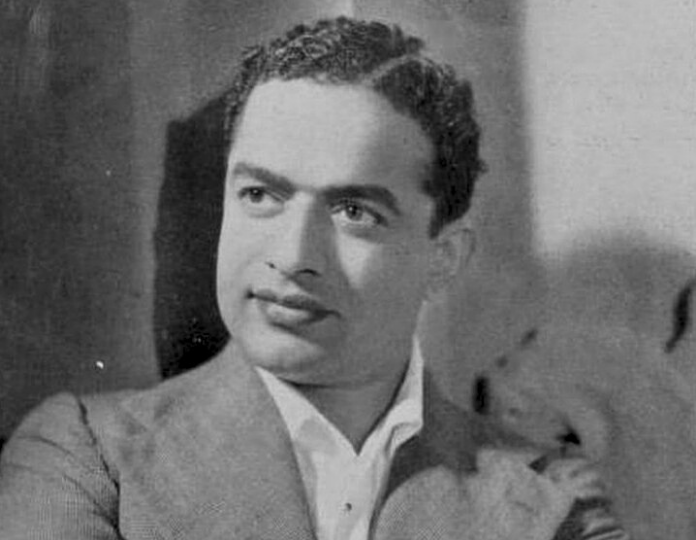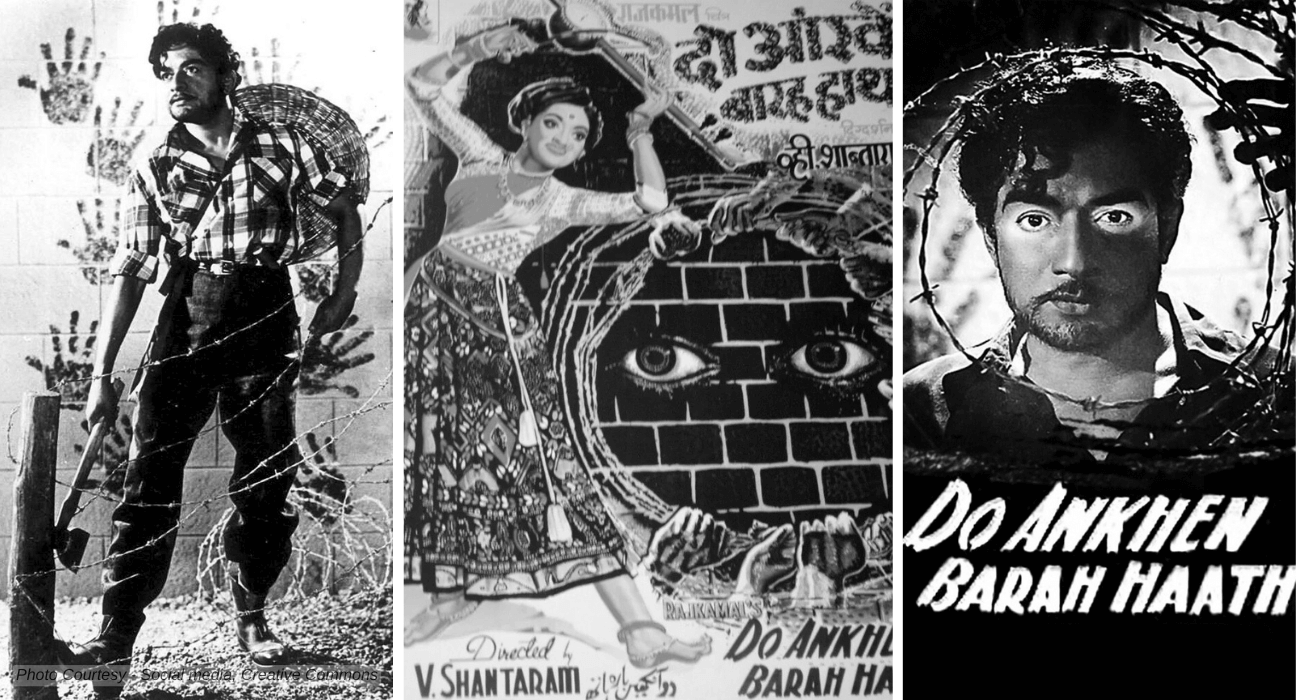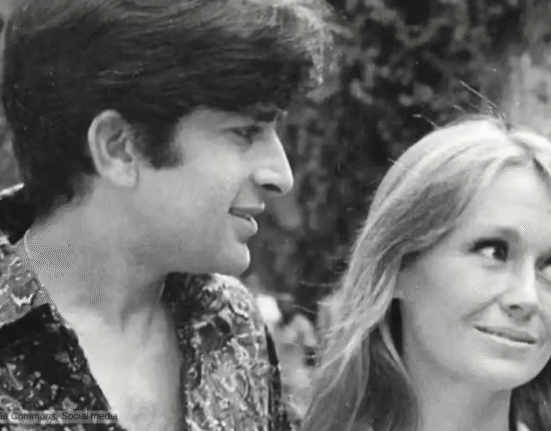In the history of Hindi cinema, there are many films that not only entertained the masses but also left a deeper impact on society that will last forever. 1957 is the year when movies like Mother India, Naya Daur, and Pyaasa come out. These films not only mesmerize the audience but also leave a mark on society. The same year comes Cine Maverick V. Shantaram’s “Do Ankhen Barah Haath.” The film is a prime example of the influence movies can have on people. And how they can be used as a catalyst to social change.
An Ode to Gandhi
V. Shantaram wrote a story around the Gandhian philosophy that everybody deserves a second chance and made a movie on prison reforms. Apart from being a master storyteller and famous for making larger-than-life musicals with elaborate sets, dreamy situation and beautiful songs and dances, V. Shantaram was also among the few who recognized the power of filmmaking in its early days. He saw cinema not just as a form of entertainment but as a tool for social change. Successfully wielding this medium, he championed humanism and shed light on issues of bigotry and injustice in his films.
G. D. Madgulkar wrote the story and screenplay, inspired by a true event involving the concept of an open prison in Swatantrapur in the princely state of Aundh near Satara, Maharashtra.

The Story Of Love and Redemption

The story starts when a progressive, reform-minded young jail warden, “Adinath (V. Shantaram),” gets permission to take six surly murderers from prison to a dilapidated country farm to rehabilitate it and themselves through hard work and kindly guidance.
The movie wove a narrative through the struggles Adimath faces in his task of reforming the dreaded criminals and teaching them that with hard work, dedication, and focus, anyone can achieve their goals.
He treats them with humanity and respect, despite their ill behavior, cooks for them, and does all the hard work as an equal; slowly, the fruits of his hard work start to show and he sees changes in the demeanor of the prisoners; they start to gain confidence, self respect and humanity.
A Deeper Stydy Of Human Psyche
The belief of Adinath in redemption was wavered many times, but his resilience was always greater than the difficulty ahead. The film ends with the death of Adinath from an bull attack, instigated by a jealous neighbor, V. Shantaram, who gets seriously injured when he shoots for the bullfight sequence in the climax.
In the end, the reformed criminals decided to live at the same place where Adinath turned them into human beings. A place where they can feel that Adinath’s eyes are always watching them, a comparison to the presence of God.
Music of Do Ankhen Barah Haath
Music maestro Vasant Desai and Kaviraj Bharat Vyas craft the timeless “Aye Maalik Tere Bande Hum.” The song is an enduring message of love and compassion. Other songs like “Saiyaan Joothon Ka” and “Tak tak dhoom dhoom” are beautifully rich, relevant and still hummable.

In all the drama, the presence of a singing toy seller, “Champa,” played by Sandhya, represent the little joys of life scattered here and there between the difficulties and struggles of life
Despite being a film with a deep message, it never becomes preachy. The film also never lost the entertainment quotient, and remains light and cinematic.
Music maestro Vasant Desai and Kaviraj Bharat Vyas craft the timeless “Aye Maalik Tere Bande Hum,” delivering an enduring message of love and compassion. The songs like “Saiyaan Joothon Ka Bada Sartaj Nikla” and “Tak tak dhoom dhoom” are beautifully rich, relevant and still hummable.

Accolades
Do Ankhen Barah Haath won the Silver Bear at the Berlin Film Festival. V. Shantaram became the first Indian to win the Golden Globe, as he gets the special Samuel Goldwyn Award in 1959.
In India, Do Ankhen Barah Haath won the President’s Gold Medal in 1957. As Shantaram belonged to the old school, the performances might appear a little theatrical today. Bur the film’s story, music and the thought behind it, makes it a timeless piece.
Do Ankhen Barah Haath on IMDB









